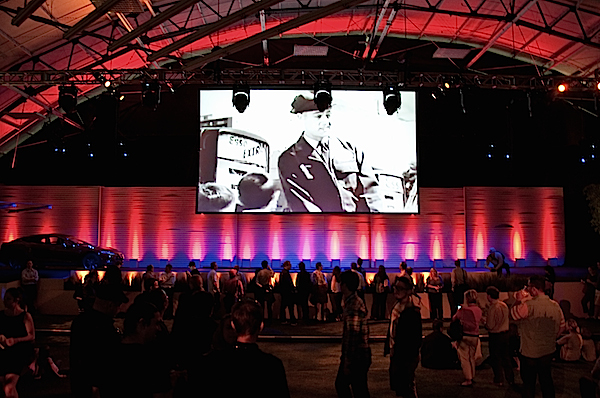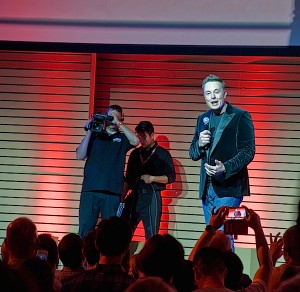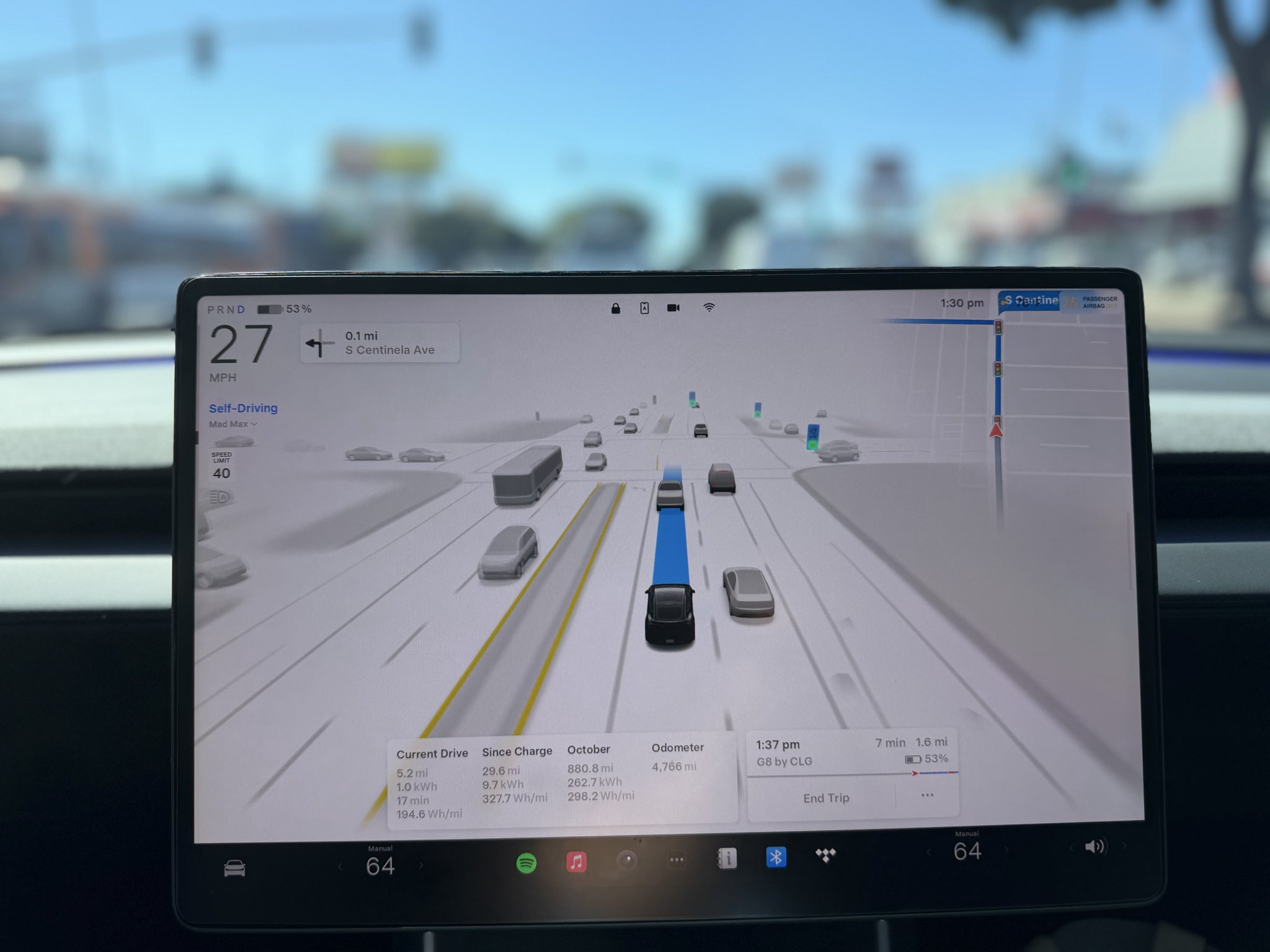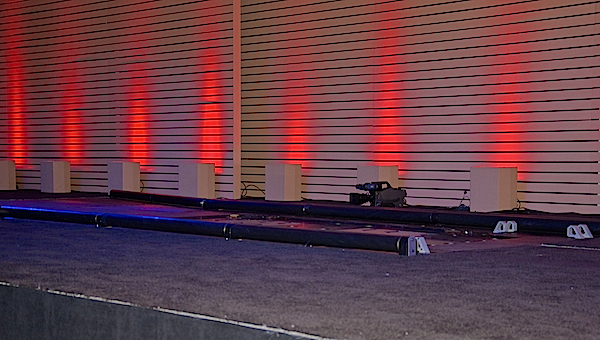News
What Happened to the Tesla Battery Swap?

 It’s hard to imagine that over a year ago Tesla Motors was drumming its Tesla battery swap system on its Model S. Since then, very little has happened, compared to the gigantic expansion of the Supercharger network and the behemoth Gigafactory development. Has Tesla abandoned the battery swapping idea?
It’s hard to imagine that over a year ago Tesla Motors was drumming its Tesla battery swap system on its Model S. Since then, very little has happened, compared to the gigantic expansion of the Supercharger network and the behemoth Gigafactory development. Has Tesla abandoned the battery swapping idea?
The Tesla Battery Swap, or not to swap
A year ago, Tesla Motors invited many of us to witness the first fast, easy and convenient battery swap demonstration for its Model S. It managed to swap two Model S battery packs in the same amount of time it takes an Audi sedan to gas up. The party was great, there was much cheering and Elon Musk spoke at length about its benefits and promised the first station would be operational by the end of that year 2013. But that was over a year ago, and since then, nothing much has happened.
Doing a little research on the current state of the Tesla battery swap on Google, won’t get you very far. The first Google Tesla battery swap links back to the Model S main page. Elon spoke in February in front of the California Public Utility Commission’s Thought Leaders program and said: “We’re a little late on [battery swapping] because we got preoccupied with a few other issues. But we’re hopefully going to get that enabled in the next few months between LA and San Francisco.”
Re-evaluating the Tesla battery swap
In all fairness, Tesla Motors has far more pressing issues than to roll out one expensive battery swapping station after another. It’s Supercharger network is growing rapidly, while the introduction of the Model X is receiving the bulk of the resources. This is followed by the expansion of the Chinese market and, finally, working on the Model III. That would be enough to keep any carmaker humming for the next year or so.
Jalopnik, a car website not always known for its love of electric vehicles (EV) reminds us that soon after the Tesla battery swap event, the California Air Resources Board (CARB) was revising how it would hand out its Zero Emission Vehicle (ZEV) credits. This puts into question the “fast fueling” seven ZEV credit incentives carmakers would receive to refuel a full pack in under 15 minutes for 285 miles.
Tesla battery swap stalled
According to Diarmuid O’Connell, Tesla VP Corporate Development, Tesla could have something in place by the end of the third quarter, which means the next few months. However, this prospect seems less likely, even by the end of the year.
We’ve known for some time that the company is developing their first Tesla battery swap location, in California, somewhere between Los Angeles and San Francisco which would most likely be a demonstration program for utilities. Since then, Zachary Shahan reported on Treehugger that Tesla would evaluate how they would roll out battery swapping stations elsewhere.
I guess Tesla Motors needs that Gigafactory more than we first imagined in order to make its Tesla battery swap a reality.

News
Swedish union rep pissed that Tesla is working around a postal blockade they started
Tesla Sweden is now using dozens of private residences as a way to obtain license plates for its vehicles.

Two years into their postal blockade, Swedish unions are outraged that Tesla is still able to provide its customers’ vehicles with valid plates through various clever workarounds.
Seko chairman Gabriella Lavecchia called it “embarrassing” that the world’s largest EV maker, owned by CEO Elon Musk, refuses to simply roll over and accept the unions’ demands.
Unions shocked Tesla won’t just roll over and surrender
The postal unions’ blockade began in November 2023 when Seko and IF Metall-linked unions stopped all mail to Tesla sites to force a collective agreement. License plates for Tesla vehicles instantly became the perfect pressure point, as noted in a Dagens Arbete report.
Tesla responded by implementing initiatives to work around the blockades. A recent investigation from Arbetet revealed that Tesla Sweden is now using dozens of private residences, including one employee’s parents’ house in Trångsund and a customer-relations staffer’s home in Vårby, as a way to obtain license plates for its vehicles.
Seko chairman Gabriella Lavecchia is not pleased that Tesla Sweden is working around the unions’ efforts yet again. “It is embarrassing that one of the world’s largest car companies, owned by one of the world’s richest people, has sunk this low,” she told the outlet. “Unfortunately, it is completely frivolous that such a large company conducts business in this way.”
Two years on and plates are still being received
The Swedish Transport Agency has confirmed Tesla is still using several different workarounds to overcome the unions’ blockades.
As noted by DA, Tesla Sweden previously used different addresses to receive its license plates. At one point, the electric vehicle maker used addresses for car care shops. Tesla Sweden reportedly used this strategy in Östermalm in Stockholm, as well as in Norrköping and Gothenburg.
Another strategy that Tesla Sweden reportedly implemented involved replacement plates being ordered by private individuals when vehicles change hands from Tesla to car buyers. There have also been cases where the police have reportedly issued temporary plates to Tesla vehicles.
News
Czech Deputy excited for Tesla FSD, hints at Transport Committee review
The ANO party lawmaker shared his thoughts about FSD in a post on social media platform X.

Martin Kolovratník, a Czech Republic Chamber of Deputies member, has expressed his excitement for Tesla’s Full Self-Driving (FSD) after an apparent constituent called for a quick approval for the advanced safety system.
The ANO party lawmaker, who drives both diesel and EV, shared his thoughts about the matter in a post on social media platform X.
The official’s initial statements
Kolovratník kicked off the exchange with a post outlining his coalition’s efforts to scrap highway toll exemptions for electric vehicles and plug-ins starting in 2027.
“Times have changed. Electric vehicles are no longer a fringe technology, but a full-fledged part of operations. And if someone uses the highway network, they should follow the same rules as everyone else. That’s the basis of fairness,” he wrote.
He emphasized equity over ideology, noting his personal mix of diesel and electric driving. “For this reason, there is no reason to continue favoring one technology at the expense of another… It’s not about ideology, it’s about equal conditions. That’s why we clearly agreed within the new coalition: the exemption for electric vehicles and plug-ins will end in 2027. The decision is predictable, understandable, and economically sound.”
Tesla FSD enthusiasm
The conversation pivoted to Tesla’s FSD when X user @robotinreallife, who seems to be one of the official’s constituents, replied that other matters are more important than ending highway exemptions for EVs.
“I’m happy to pay for the highway, but I have a question about a much more fundamental matter: The Netherlands will approve the operation of Tesla FSD in February 26, a technology that has been proven to reduce accidents. The Czech Republic has the option to immediately recognize this certification. Do you plan to support this step so that we don’t unnecessarily delay?” the X user asked.
Kolovratník responded promptly, sharing his own excitement for the upcoming rollout of FSD. “I know about it. I like it and it seems interesting to me. Once we set up the committees and subcommittees, we’ll open it right away in that transport one. Thanks for the tip, I’ll deliver the report,” the official noted in his reply on X.
Kolovratník’s nod to FSD hints at the system’s potentially smooth rollout to Czechia in the coming year. With the Netherlands possibly greenlighting FSD (Supervised) in early 2026, Kolovratník’s commitment could accelerate cross-border certification, boosting FSD’s foray into Europe by a notable margin.
News
Tesla Model 3 named New Zealand’s best passenger car of 2025
Tesla flipped the switch on Full Self-Driving (Supervised) in September, turning every Model 3 and Model Y into New Zealand’s most advanced production car overnight.

The refreshed Tesla Model 3 has won the DRIVEN Car Guide AA Insurance NZ Car of the Year 2025 award in the Passenger Car category, beating all traditional and electric rivals.
Judges praised the all-electric sedan’s driving dynamics, value-packed EV tech, and the game-changing addition of Full Self-Driving (Supervised) that went live in New Zealand this September.
Why the Model 3 clinched the crown
DRIVEN admitted they were late to the “Highland” party because the updated sedan arrived in New Zealand as a 2024 model, just before the new Model Y stole the headlines. Yet two things forced a re-evaluation this year.
First, experiencing the new Model Y reminded testers how many big upgrades originated in the Model 3, such as the smoother ride, quieter cabin, ventilated seats, rear touchscreen, and stalk-less minimalist interior. Second, and far more importantly, Tesla flipped the switch on Full Self-Driving (Supervised) in September, turning every Model 3 and Model Y into New Zealand’s most advanced production car overnight.
FSD changes everything for Kiwi buyers
The publication called the entry-level rear-wheel-drive version “good to drive and represents a lot of EV technology for the money,” but highlighted that FSD elevates it into another league. “Make no mistake, despite the ‘Supervised’ bit in the name that requires you to remain ready to take control, it’s autonomous and very capable in some surprisingly tricky scenarios,” the review stated.
At NZ$11,400, FSD is far from cheap, but Tesla also offers FSD (Supervised) on a $159 monthly subscription, making the tech accessible without the full upfront investment. That’s a game-changer, as it allows users to access the company’s most advanced system without forking over a huge amount of money.










